LAST UPDATED: September 18th, 2024
It seems as though there aren’t many new methods for taking a buck these days. It almost seems every tactic for killing big bucks has already been brought to the table. That is what I thought until I spoke Iowa farmer and big-buck-killer Tedd Miller.
What he taught me was that there is an exciting new method out there for drawing in bucks. It is the horizontal rub post. That’s right. Horizontal.
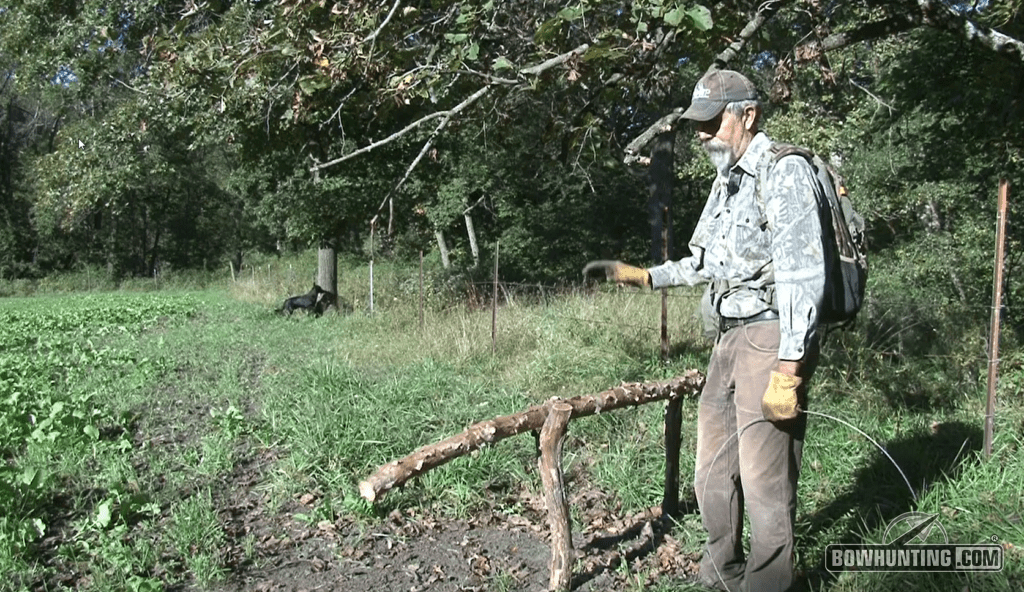
Ted Miller sets up a new horizontal buck rub on the edge of a food plot.
We are all familiar with rubs. They are as commonplace in the deer woods as the deer themselves, but rarely do hunting rubs alone bring in a buck. Horizontal rub posts do. They were the creation of Ted Miller, and he actually discovered them by mere happenstance.
While filming elk in Yellowstone National Forest nearly ten years ago, Miller got repeated footage of bulls that were attracted to certain areas with blown-down trees. They would rub their antlers on those trees or on branches shooting out horizontally.
He wasn’t looking for this behavior at all. He was just observant enough to pick up on what the elk were doing, and it got him thinking, “I wonder if I can try this at home on whitetails.”
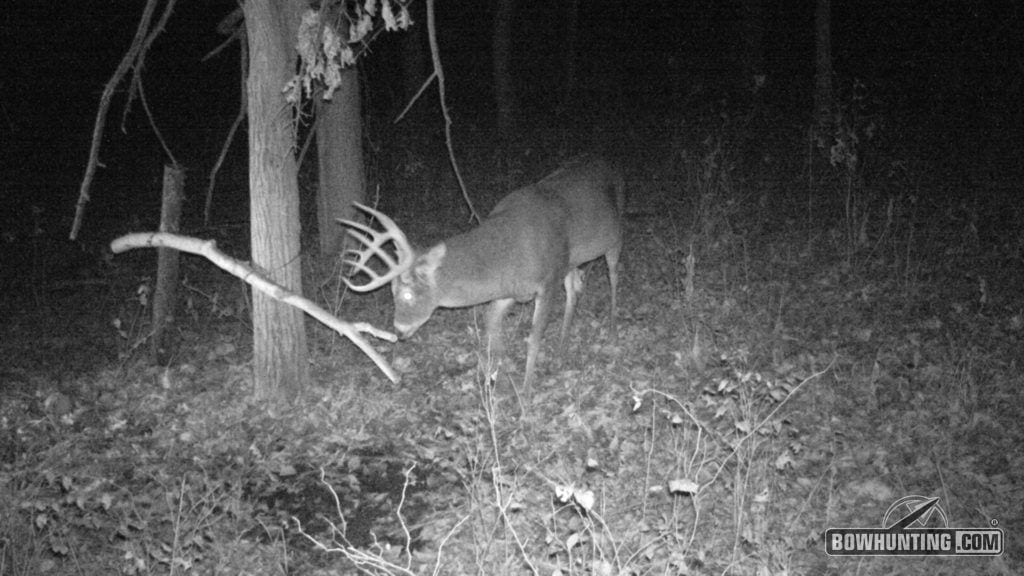
Paying attention to the behavior of bull elk led Ted Miller to a new whitetail strategy that has paid off over and over again.
When he returned home, he started working on his idea. What he found was pretty interesting. “I didn’t have any experience making these posts, so for my first one, I went to one of my food plots and drove two posts into the ground and wired a limb to the posts about knee high or a little higher,” he recalls. “That was back when trail cameras were really just catching on. I didn’t have a trail camera at the time, so I just went back two or three days later and checked on it.” The limb had been worked.
So, he set up a ground blind at that spot, and on his first night sitting in the blind with his son, a large buck came and worked the post right in front of them. They got some good video footage of the deer working the rub, but when it came time to shoot, the deer spooked.
Regardless, the experience was one Miller will never forget, and is likely the very first time a hunter has ever used a horizontal rub post. It set the stage for many more such encounters for Miller. “That was the very first one I ever did, and over the years, I have figured out what the deer like and want out of them. I have been able to improve them along the way.”
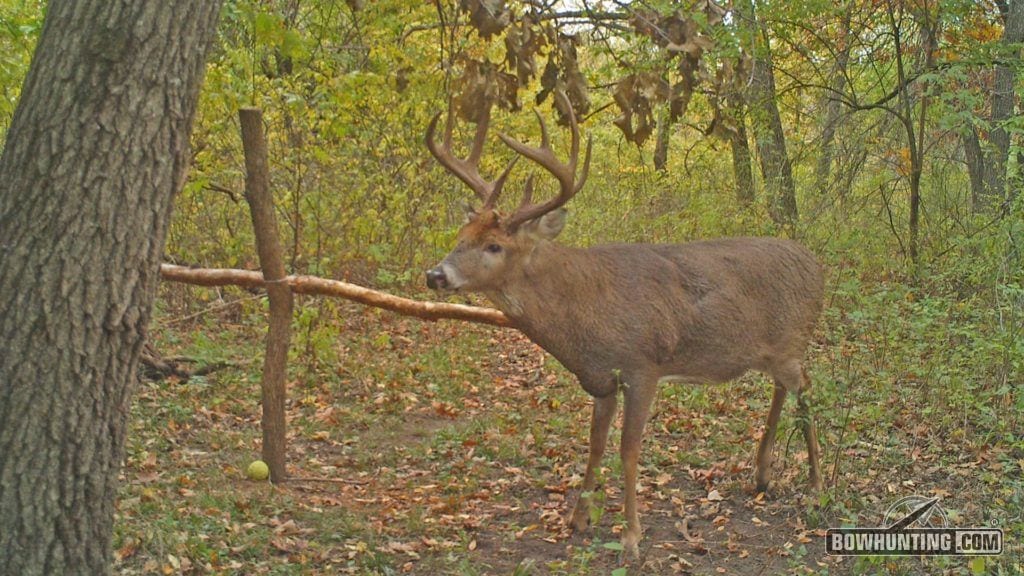
Horizontal buck rubs just might be the latest rage in drawing and holding bucks in your area.
The Limb Matters
The main thing that Miller found was that the type of limb can make all the difference. “Most hunters in Iowa were using cedar trees in their posts. The adage is that bucks prefer to rub on cedars, but they weren’t having a lot of success with them. I have found that Scotch pine limbs work the best.” The reasons are brilliant when you think about it.
First, when using scotch pines, you do not need to cut down the whole tree as you would with a cedar. Mature scotch pines are bigger, allowing you to simply cut off a limb rather than take the whole tree.
Plus, they are not native to the area. They are more of a Christmas tree and are planted and easy to find if you look around. Miller has several planted in his yard, making finding them a cinch!
He also notes that the limbs should be about the size of your wrist or slightly larger in diameter so they won’t break when a buck gets aggressive with it.
Another thing that he has learned over the years – and probably the most important thing – is that once you find the limb you are going to use, cut it longer than the gap between your posts.
“I like to run my limb about two feet or so past one end of my posts so it sticks out from the end on the side I want the bucks to work. I found that they prefer working the end that is sticking out past the posts much more than they do the part of the limb that lies between the posts. I think it is just more convenient for them.”
Another trick that he has discovered is to attach the limb loosely to the posts so it has some play in it. “Different bucks have different personalities. Some like to get aggressive and fight with it a little bit, so when I wire my limb up, I do so that it will move up and down about six inches to a foot or so. This gives it some give and allows the limb to rock up and down when a buck wants to fight with it and such.”
The last couple of years Miller has been adding a licking branch to his horizontal rub posts. “I just run another limb above it to act as a sign post. I’m just trying to give a buck everything that he wants in order to hold his attention.”
He usually just attaches the licking branch above the end of the limb that sticks out past the post, but he says that if your posts are tall enough you can attach it to one of them and have it hang down. Or, you can also position your set-up underneath a tree that has a limb hanging down above your horizontal limb. Any situation will work.
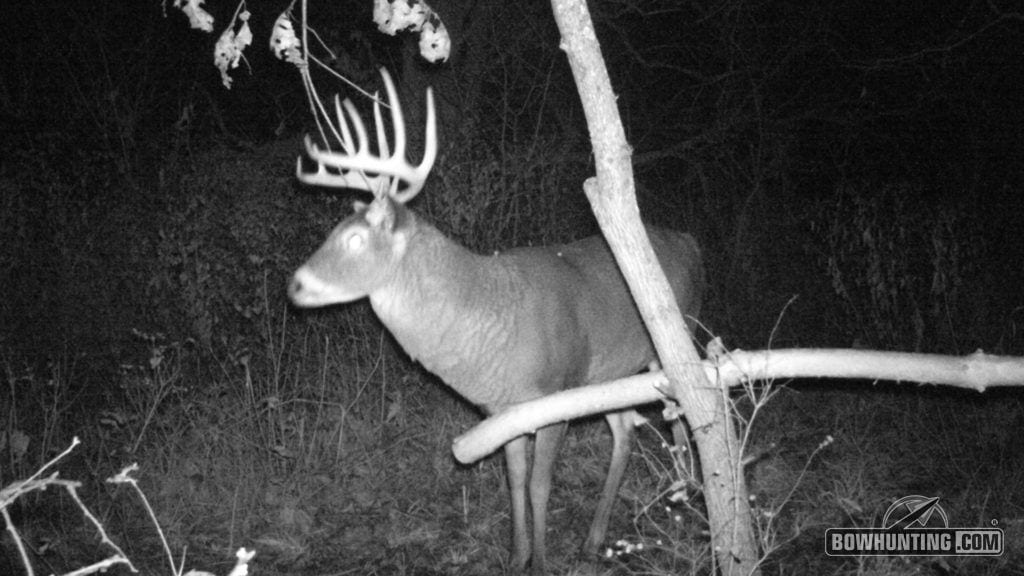
An overhanging branch above your rub post allows you to add an even greater level of realism to your setup.
An Added Benefit
A really great thing about using these rub posts is that they actually hold a deer in a certain spot for a while. A great plus for Miller, who enjoys getting video footage of deer. “It’s really hard to get a buck to stop long enough to get any decent footage of him, but with these rubs, they tend to stay and work it for a little bit. This helps me out when I am filming. It also allows you to learn a lot about buck behavior.”
What Bucks Use It?
Miller has seen everything from spikes to Boone and Crockett bucks use his horizontal rubs, so no matter what type of buck you are after, it will work. He does note, however, that some bucks, especially smaller ones, will come in cautiously as they might be intimidated at first. But nonetheless, it attracts bucks of all calibers.
Scent?
Nope. Miller doesn’t use any on his limbs, noting that the Scotch pine is a sticky, sappy type of tree anyway and will absorb and hold the scent of the deer that use it. That is all that is required to help draw more deer in.
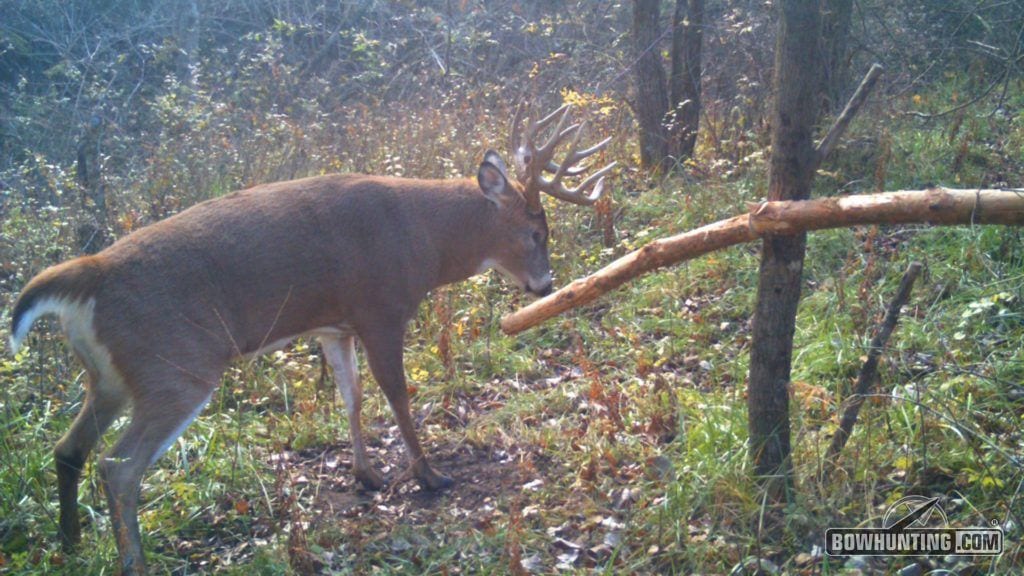
Want to spice things up in the deer woods with a new tactic this fall? Try horizontal rub post for the deer on your property.
Where and When to Use It
Obviously, they are most effective towards the rut, but they are effective earlier than that as well. Miller notes that bucks will begin hitting them as soon as they shed their velvet, although the most active times are from mid-October until the rut is completed, so be sure to set yours up around the first of October or so.
As for where to place your horizontal rubs, Miller doesn’t feel that a buck is going to get up and walk a half-mile just to hit it, so he says to set them up anywhere you feel that bucks want to be or in areas where you plan to hunt and see high buck activity. Food plots and staging areas are prime examples.
The Bottom Line
Miller found his horizontal rub post system by accident, and he has perfected it over the years. In my opinion, this may be one of the most under-utilized tactics for drawing in bucks, and perhaps, one you should be trying this fall.

 By
By 



